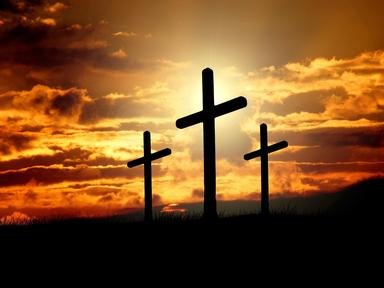Quiz Answer Key and Fun Facts
1. Francis Xavier (1506-1552) was one of the co-founders of the Society of Jesus (Jesuits). On what very large continent did he spend the last ten years of his life in missionary activities?
2. Jean de Brébeuf (1593-1649) spent a number of years working as a missionary with the Huron people. In which country did he carry out this work?
3. Junipero Serra (1713-1784) is buried where he died, at the Mission San Carlos Borroméo del río Carmelo, also known as the Carmel Mission, which had been headquarters for his missionary efforts since 1770. What is the current name of the country in which he carried out the sometimes-controversial missionary work for which he is best remembered?
4. William Carey (1761-1834) translated the Bible into Bengali and Sanskrit, among other languages, during his missionary work in a Danish colony in what country?
5. Samuel Marsden (1765-1838) was the senior Anglican minister of Australia from 1800 until his death. In which nearby country is he thought to have been the first to introduce Christianity to the Maori people?
6. David Livingstone (1813-1873) was a Scottish Congregationalist medical missionary and explorer who may be most familiar from the words supposedly used by Henry Morton Stanley when the two met on the shores of Lake Tanganyika in 1871: "Dr Livingstone, I presume?" On which continent did he conduct his work as a missionary and explorer?
7. Father Damien (1840-1889) is also known as Saint Damien of Molokai for his work with lepers on the island of Molokai. In which kingdom, now a US state, did he carry out his missionary work?
8. Albert Schweitzer (1875-1965) studied to obtain a medical degree so that he would be qualified to work as a medical missionary at the French colony of Lambaréné, on the Ogooué River. What is the modern-day name of the African country where he founded the Albert Schweitzer Hospital?
9. Pearl S. Buck (1892-1973) was born in West Virginia to missionary parents. When she was three months old, they returned with her to the country where they had been carrying out their work. Their family life was disturbed by the Boxer Rebellion in between 1898 and 1901. In what country did she experience a bilingual childhood with her family?
10. Agnes Gonxha Bojaxhiu (1910-1997), also known as Mother Teresa, established the Missionaries of Charity in the city where she spent over 45 years caring for the poor and sick. With which Indian city is she associated?
Source: Author
looney_tunes
This quiz was reviewed by FunTrivia editor
Terry before going online.
Any errors found in FunTrivia content are routinely corrected through our feedback system.


